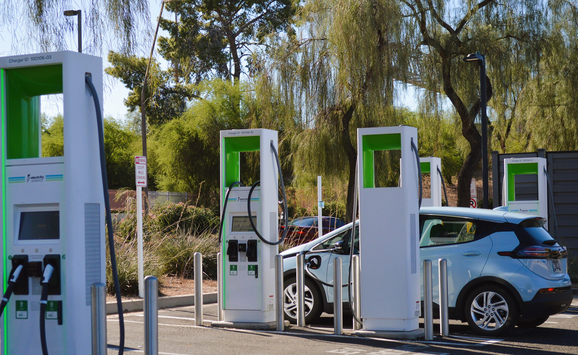Can the Clean Air Act be used to reduce emissions from the aviation sector? Sam Grausz and I looked at that question in a recent short paper we wrote in cooperation with the Center for American Progress, as part of their Blue Skies project. This post summarizes that work. See the paper here and full legal analysis here.
International aviation generates more than 3 percent of total global greenhouse gas emissions per year. This amount is relatively small but growing quickly, with worldwide aviation emissions projected to increase 300 percent to 700 percent by 2050. Until recently the sector faced no limits on these emissions. But starting this year, 2012, the European Union began regulating emissions from all flights to and from EU airports. Crucially, the European Union law covers both foreign and EU airlines and their emissions produced over their entire flight path, not just over EU airspace.
The new law, which is opposed by much of the aviation industry, has led to an ongoing legal and diplomatic conflict with the United States and other countries and threatens to trigger a trade war. Opponents contend that the law violates Europe's international obligations and will substantially increase aviation costs. Supporters argue that the law is legal and will do little to harm airlines and could even benefit them in the short run.
Many U.S. airlines and the U.S. government have been leading opponents of the EU law. Three U.S. airlines and their trade association pursued legal claims against the EU that the European Court of Justice ultimately rejected in late 2011. The U.S. aviation industry is also calling on the federal government to challenge the EU law in international court. The U.S. government helped to convene two meetings (in Delhi, India and in Moscow) of opponents of the EU law and spearheaded a resolution in the International Civil Aviation Organization, or ICAO, declaring the EU law illegal.
Despite this opposition, the U.S. airlines and government have so far complied with the EU law, unlike China and India, who refuse to allow their airlines to comply. In retaliation, China also recently cancelled an order of airplanes from European plane manufacturer Airbus. The U.S. stance could soon change: In October 2011 the U.S. House of Representatives passed a measure that would prevent U.S. airlines from complying with the EU law. The U.S. Senate held hearings on the measure in June. The conflict with the EU could quickly escalate into a trade war and do significant harm to the weak U.S. and European economies.
Countries on both sides of the dispute support replacing the EU law with an international policy under the direction of ICAO. ICAO is currently considering market-based measures to reduce greenhouse gas emissions from aviation. It has debated such a policy for 15 years, though it has recently accelerated the process and a draft proposal is expected in March 2013. Past failures, however, and the inherent difficulties of global climate negotiations make it unclear whether ICAO will succeed.
The U.S. Clean Air Act will play a vital role in future policy discussions whether the ICAO process succeeds or fails. If ICAO succeeds, then the United States will likely use the Clean Air Act to implement the ICAO policy much as it has done for past aviation policies. If ICAO fails, then the United States could develop its own aviation emissions policy under the Clean Air Act and thereby escape the EU program. A U.S. measure to limit greenhouse gas emissions that is deemed equivalent to the EU program would exempt flights to and from the United States under the EU law. Any other policy through new legislation under either of these scenarios is unlikely due to the current political climate in Washington. Thus, to inform either of these scenarios, this paper explores opportunities for regulating greenhouse gases from aviation under the Clean Air Act, focusing on opportunities for flexible, cost-effective regulation.
We contend that the EPA could craft aviation emissions regulations under the Clean Air Act that could achieve both environmental and industry goals while implementing the ICAO policy or satisfying the EU "equivalency" requirement. These regulations could be both broad and flexible, covering existing and new aircraft engines and allowing compliance through airframe and operational changes. The EPA might also be able to use market-based regulatory tools, further increasing flexibility and likely cost-effectiveness.
We recognize, however, that there are important limitations as well as challenges. Clean Air Act regulation could not generate revenue to fund international climate finance or other priorities. Further, the regulation would likely not cover emissions outside of U.S. airspace, though it would indirectly reduce them. Also, international law may complicate regulation of foreign-flag airlines. And as with any contentious regulation under the Clean Air Act, political, administrative, and legal challenges are likely.
This content was also posted at CAP.





